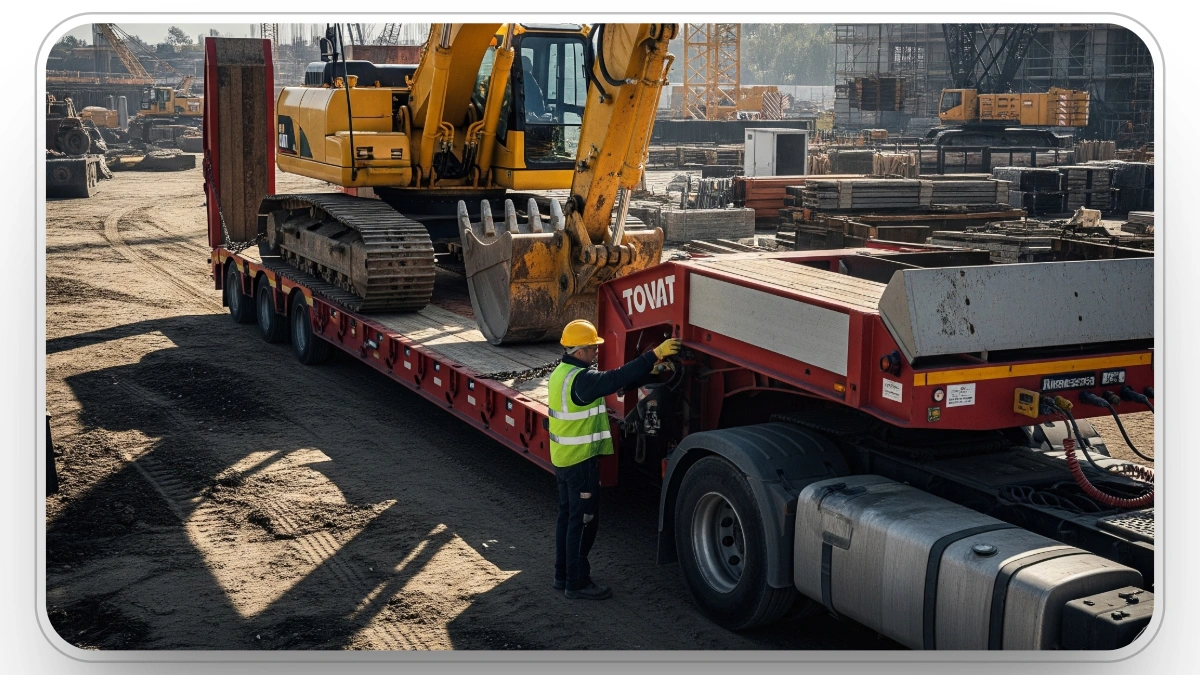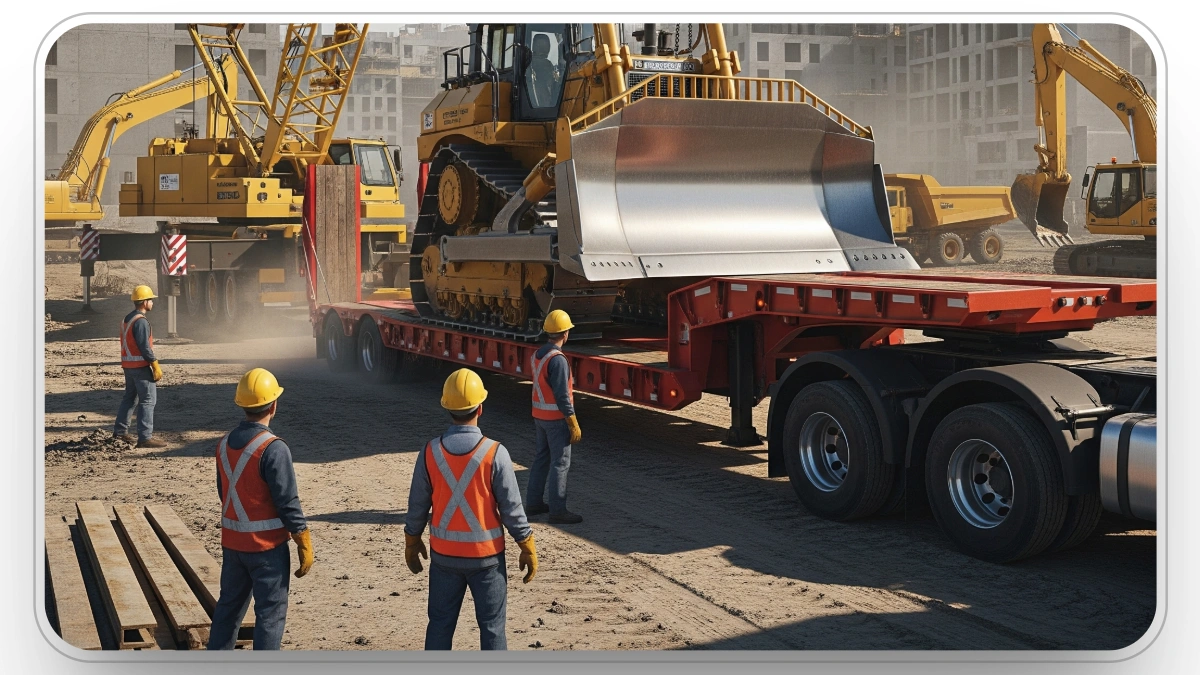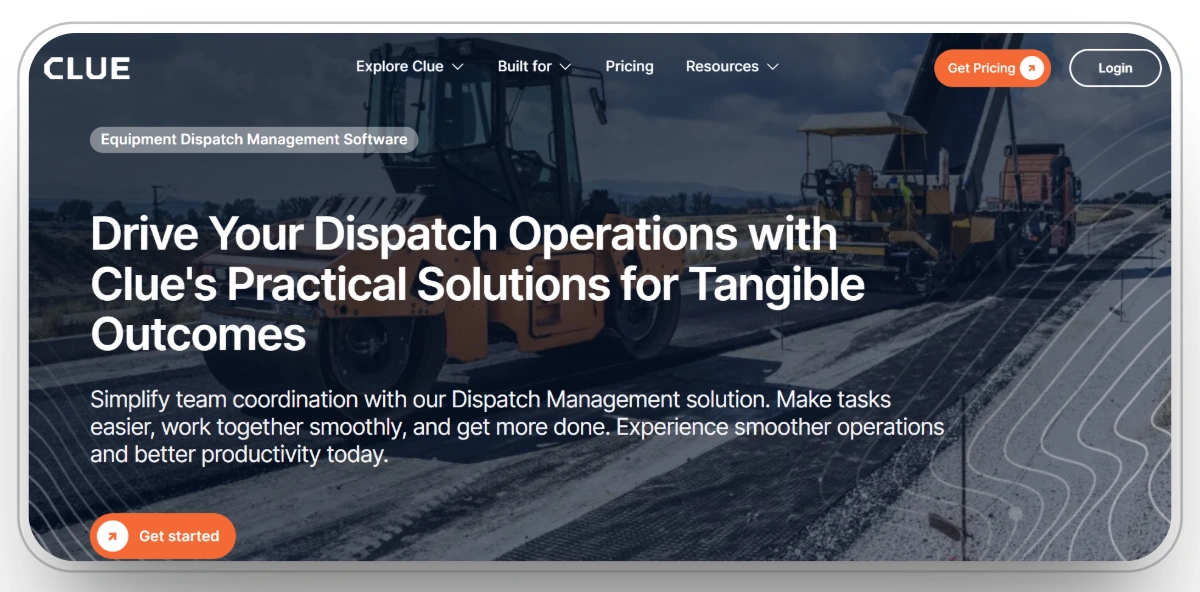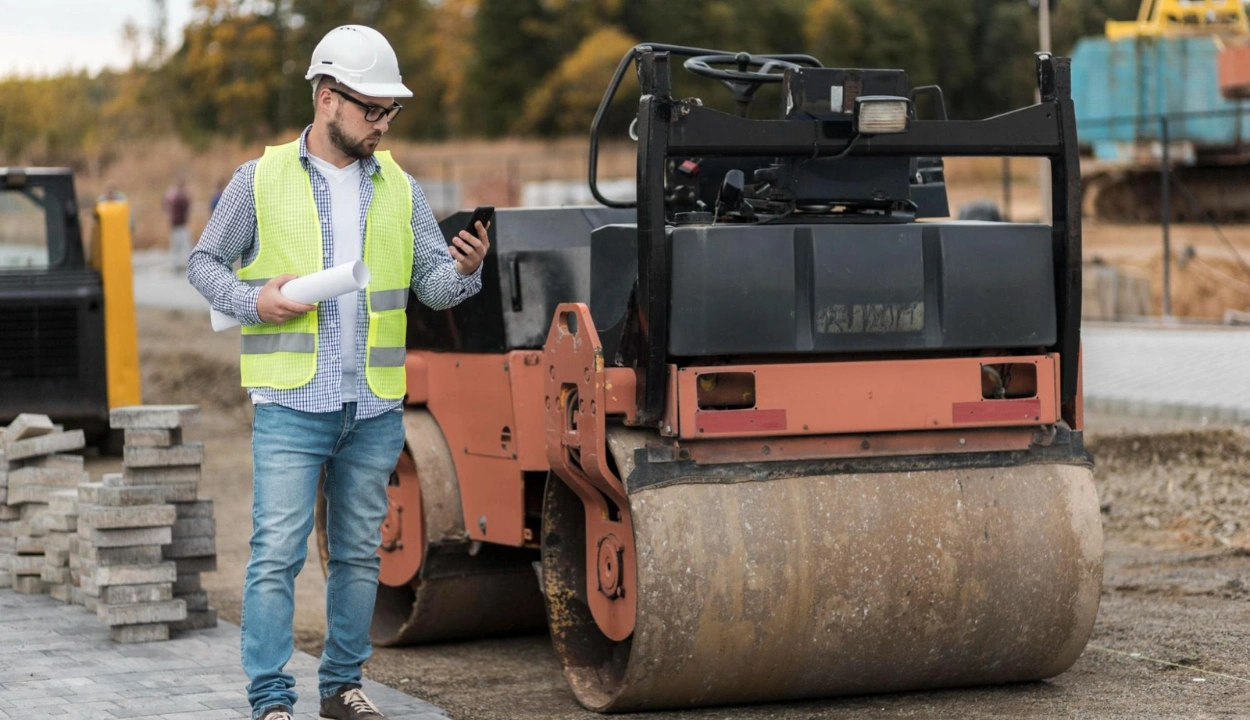The Vital Role of Lowboy Drivers in Managing Heavy Equipment
Lowboy drivers are important in construction, where heavy equipment needs to be delivered efficiently and safely. They do not simply drive, but are at the center of the whole equipment management process. Whether it is an excavator or a crane, lowboy drivers make sure that oversized equipment is loaded, delivered on schedule, and in a hassle-free manner.
They are not just experienced in driving big vehicles, but a combination of technical expertise, logistics and an impeccable safety record. The drivers will be necessary in ensuring that there are no delays or damages to the equipment in the course of the projects.
To discover more about how the lowboy drivers are important, with industry statistics and examples, we will discuss how they assist in managing the heavy equipment used in various industries.
What is a Lowboy?

The lowboy, also known as a low loader or lowboy trailer, is a specialized type of flatbed trailer designed for transporting heavy and oversized equipment such as excavators, bulldozers, rollers, and other construction and mining machinery.
Its distinguishing feature is a lowered deck, which allows for the transportation of tall equipment without exceeding legal height limits on roads. This makes it ideal for moving large, heavy machinery that would be risky or impossible to transport on a standard flatbed trailer.
Lowboy Play Role in Heavy Construction?

1. Transportation of Heavy Equipment
The lowboy drivers have the task of carrying the heaviest, largest and oversized equipment, which cannot be carried by the standard trucks because of their size and weight. Lowboy trailers have a lowered deck to enable them to transport machinery that is beyond the height restrictions of the flatbed trailers in a safe manner.
- Payload Capacity: A standard lowboy trailer can carry the capacity of an excavator of between 20,000 to 50,000 pounds and that of a bulldozer is between 15,000 to 40,000 pounds depending on the number of axles the trailer has. The total carrying capacity is 40-80000 pounds.
This range of weights that ordinary trailers cannot hold, and the very built of the lowboy are meant to handle these heavy weights without causing damage to the road or the construction equipment used.
- Height and Clearance: A lowboy trailer has many features, a lowered deck height being one of the most significant. They will normally carry equipment up to 18 to 24 inches deck height, such as carrying cranes and heavy machinery. This is crucial in such industries as construction whereby machines have to be moved over long distances without the trouble of worrying about road clearance.
Lowboy drivers are essential in the construction, mining, logging, and oil industries because they can transport oversized loads that are needed in the operations.
2. Safety and Compliance

Specific regulations apply to transportation of oversized and heavy loads, and lowboy drivers have to be sure that they are up to local, state and federal standards. This is not a simple task of driving but entails observing safety regulations, acquiring permits and proper securing of the equipment.
- Regulatory Compliance: As an example, a single-trip permit in California of oversized loads ranges between 100 and 1,000 dollars, depending on the size and weight of the equipment.
Also, drivers are subject to time limits as to when they can carry oversized loads. Such limitations will normally entail that the loads be transported during daytime only, thereby forcing lowboy drivers to plan and coordinate properly.
- Weight and Route Restrictions: The Federal Motor Carrier Safety Administration (FMCSA) has set 80,000 pounds as the standard max weight limit of a load applicable in most states although most States have further restrictions on the weight limits depending on the route.
As a case in point, within New York, the weight of oversized loads may be limited to 55,000 pounds on specific routes. Such inconsistency in laws implies that lowboy drivers need to be well conversant with the specifications of every route, which becomes highly significant in evading fines or transit delays because of failure to obey the law.
- Reducing Accidents and Fines: Lowboy drivers have the key role of making sure the equipment is loaded in the right way which prevents accidents, damages and fines.
3. Inspection and Maintenance
The lowboy drivers are also involved in the inspection and keeping of both the trailer and the equipment they are hauling.
- Pre-Trip Inspections: The FMCSA regulations insist that lowboy drivers must conduct detailed pre-trip inspections prior to the commencement of their trip. Such inspections involve the tires, brakes, and securement of the trailer and the general condition of the equipment being hauled. According to a study conducted by Construction Industry Institute, equipment delivery delays are contributors of up to 20-30% of the project delays. An oversight might prove detrimental in the form of delays or, worse, road accidents.
- Reducing Breakdown Risks: Lowboy drivers eliminate the possibility of breakdowns by checking that all the mechanical parts are in excellent working condition before they embark on the road thus saving their employers time and money.
- Timely Repairs: The lowboy drivers are also trained to detect any issues that they may have with their equipment and present them to the maintenance crews as soon as possible.
4. Coordination with Equipment Managers

Transportation teams and equipment managers will frequently have the lowboy drivers as the first contact point. They are responsible for making sure that heavy equipment is brought at the right time and in the appropriate state to suit the requirements of the working site.
- Timely Delivery: Lowboy drivers are essential to the schedule of construction projects because they ensure that machinery is delivered safely and on time. Their communication with equipment managers allows preventing delays and interruptions that are expensive.
- Optimizing Transport Routes: Lowboy drivers should also collaborate effectively with logistic teams in choosing convenient and cost-efficient routes to be used in the transportation of equipment.
5. Efficient Loading and Unloading
Equipment loading and offloading is one of the most significant responsibilities of the lowboy drivers. This should be done with skill and coordination so as not to damage the equipment and also the trailer.
- Load Securement: It is also essential that the drivers have a set of procedures when fastening the equipment to the lowboy trailer.
- Unloading Time: The real unloading takes 30 minutes to an hour depending on the nature of the heavy equipment that will be unloaded, and the specifics of the place. The speed and effectiveness of the discharge process is controlled by the Lowboy drivers so that little downtime should be experienced on the construction site due to inefficiencies.
6. Risk Mitigation
The oversized loads transportation is fraught with many risks, starting with weather related delays and ending with accidents due to improper loads handling. The drivers of lowboys undergo training to avoid these risks and transport safely.
- Accident Prevention: The possibility of accidents is greatly decreased by lowboy drivers. The Insurance Institute for Highway Safety (IIHS) asserts that oversized loads cause about 5% of all trucking accidents each year.
- Weather Conditions: Lowboy drivers reduce this risk by monitoring the routes and travel times to circumvent bad weather to ensure the safety of the cargo and their own safety.
How Clue Supports Lowboy Driver Operations

Clue is a powerful platform that helps streamline operations for lowboy drivers, enhancing their ability to manage equipment, schedule tasks, and maintain communication—all from a single, easy-to-use interface.
1. Self-Dispatching Capabilities
With Clue, drivers can see available dispatches and self-assign to them right through their mobile phones. This aspect increases the level of operational efficiency by making the drivers less reliant on the dispatchers thus drivers are able to be proactive and be in control of their time to a greater extent.
2. Integrated Dispatch Management
It offers a centralized dispatch management system including scheduling and real-time dispatch. Such integration means that the drivers are notified in time about their assignment, and there is less miscommunication and a need to get the rest of the team members on the same page.
3. Comprehensive Fleet Visibility
Clue provides a mobile and web-based unified asset tracking overview, even lowboy trailers. This visibility enables the drivers to observe the status of equipment, its location as well as its availability, leading to improved coordination and planning.
4. Maintenance Tracking and Alerts
The platform incorporates scheduled maintenance and notifications that allow drivers to be aware of the future maintenance or possible problems with their equipment. This pro-active practice reduces the downtime and makes sure that trailers are in an optimal state all the time.
5. Real-Time Communication
Clue’s mobile app guarantees immediate communication among drivers, dispatchers, and supervisors. With this feature, drivers will always adjust fast to new instructions or conditions as any changes or updates will be communicated in time.
Takeaway
Lowboy drivers play a very important role in the equipment management process as they make sure that the heavy machines are delivered safely, efficiently, and in a timely manner. Whether it is performing inspections and regulations compliance, managing logistics and ensuring load security, their efforts exceed the scope of merely driving a truck.
The knowledge and experience they have regarding the transportation of oversized equipment, accident prevention, and the most efficient transport routes save the businesses money and eliminate delays and setbacks in the progress of even the most complicated projects.
The lowboy truck that you will see next time on the road will not be just a truck anymore; you will know that it is a vital component of a significantly larger enterprise, making the industries functioning smoothly.
Take the guesswork out of heavy hauling. Keep your lowboy ops tight, efficient, and visible—with Clue.
Transform Your Equipment Management












